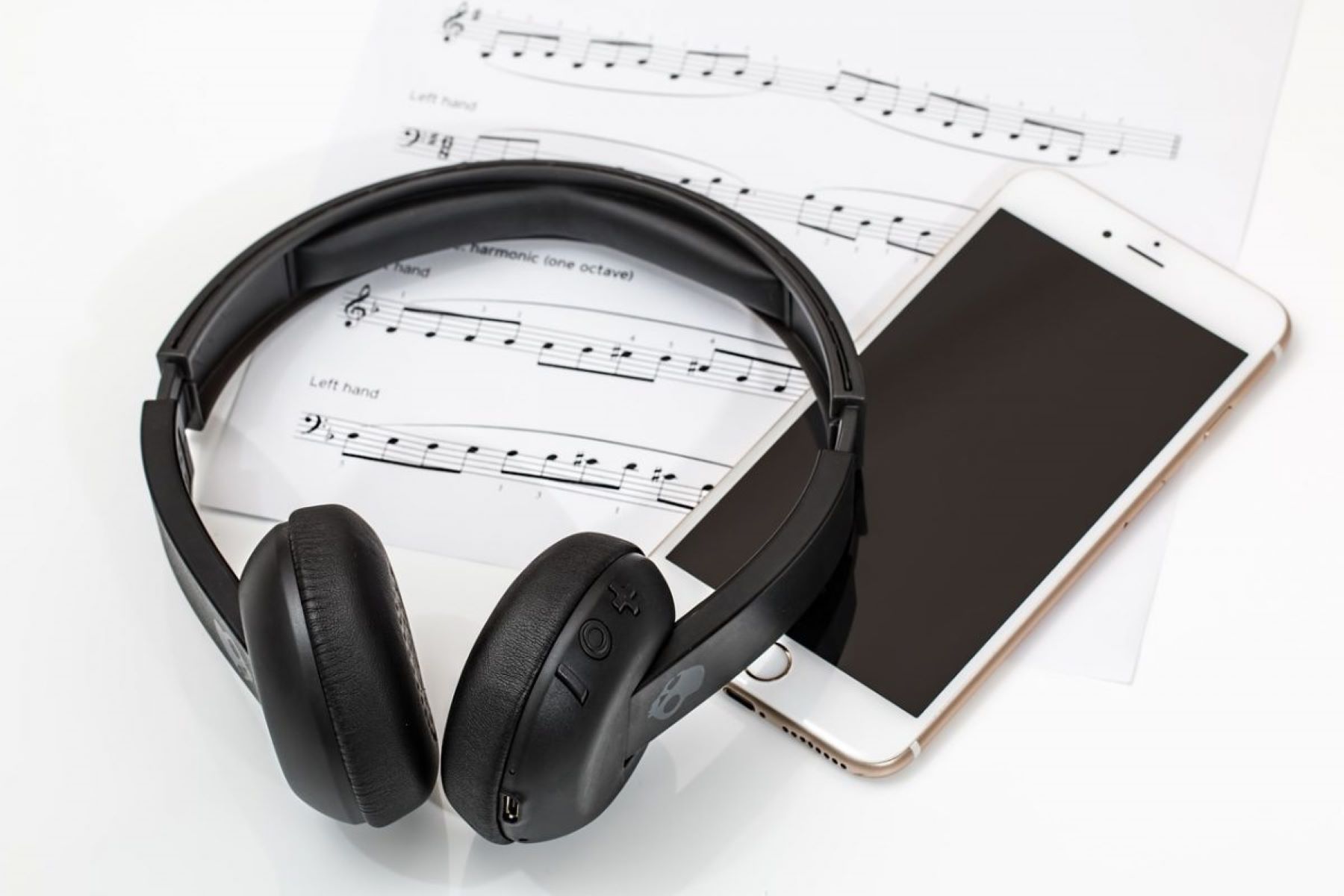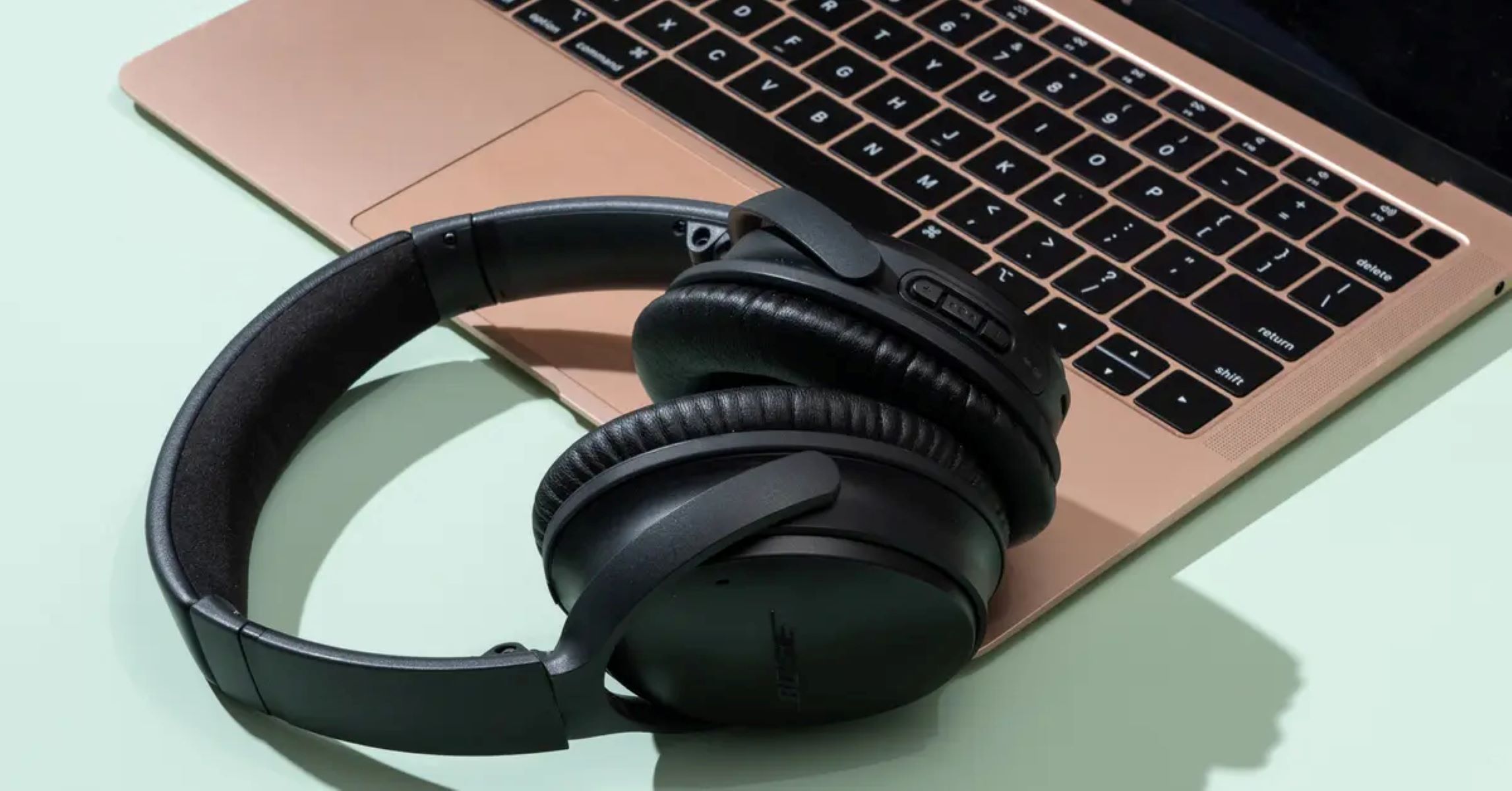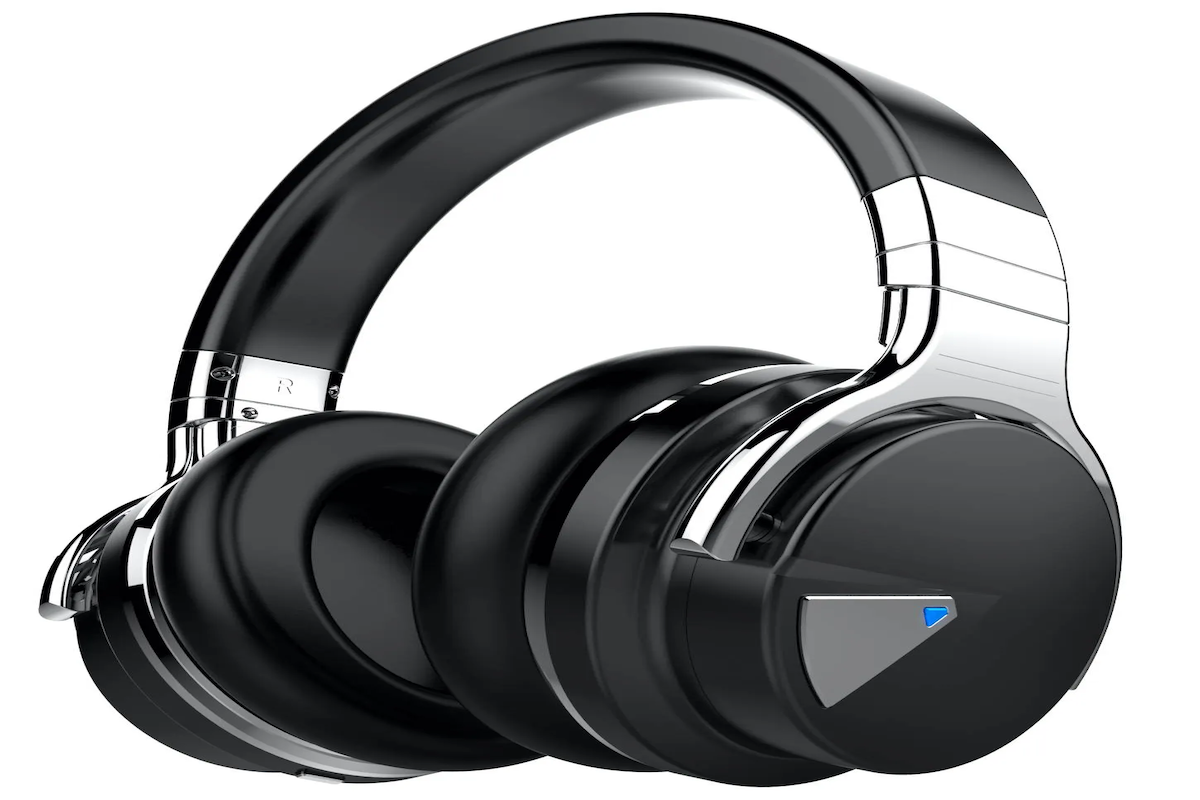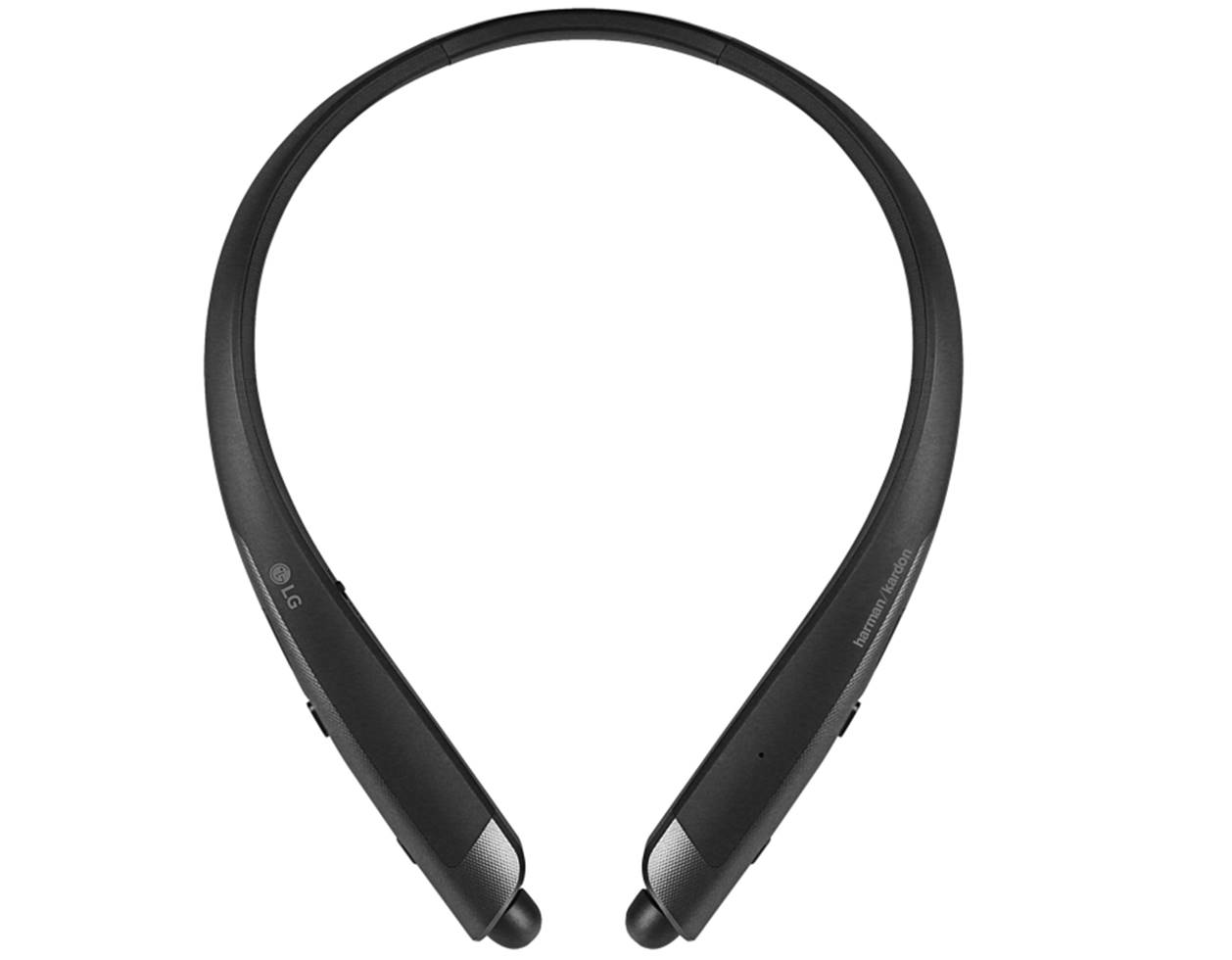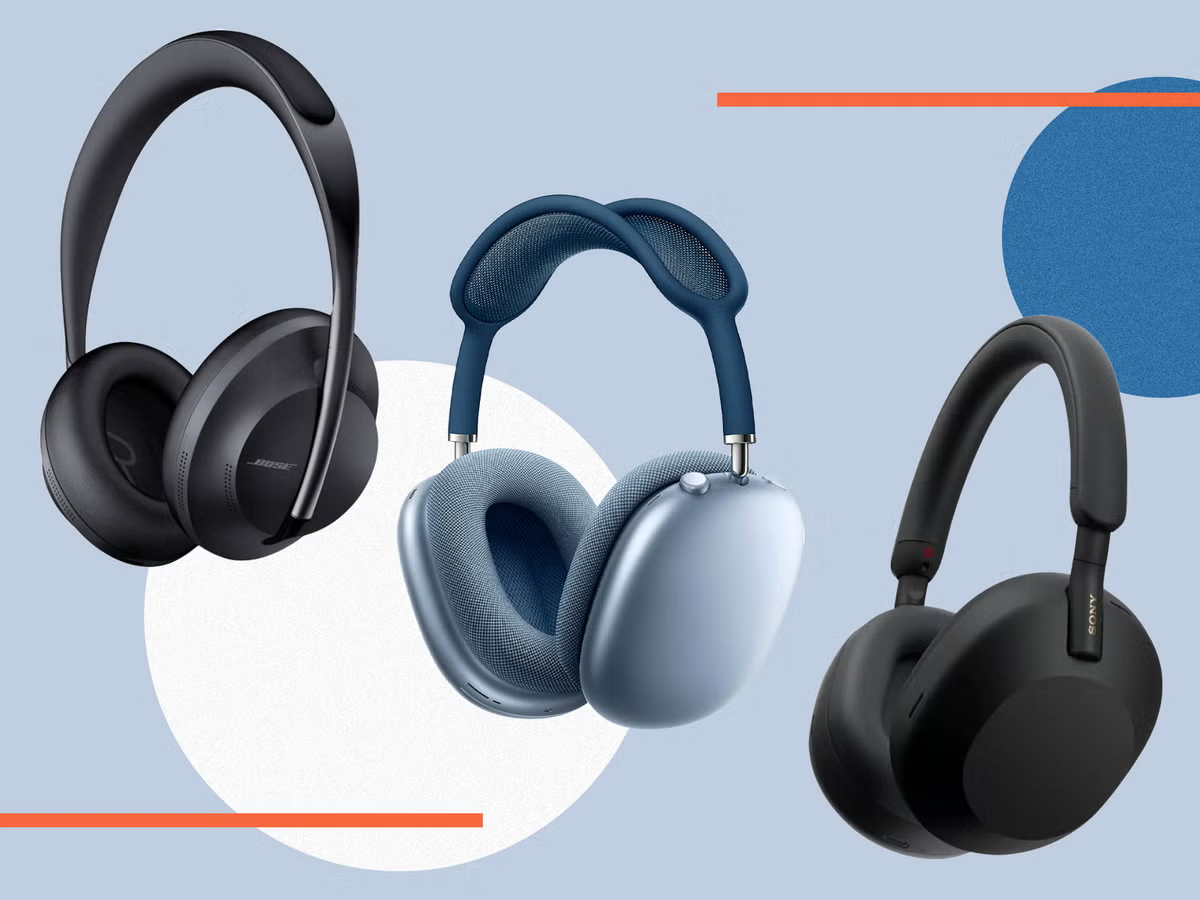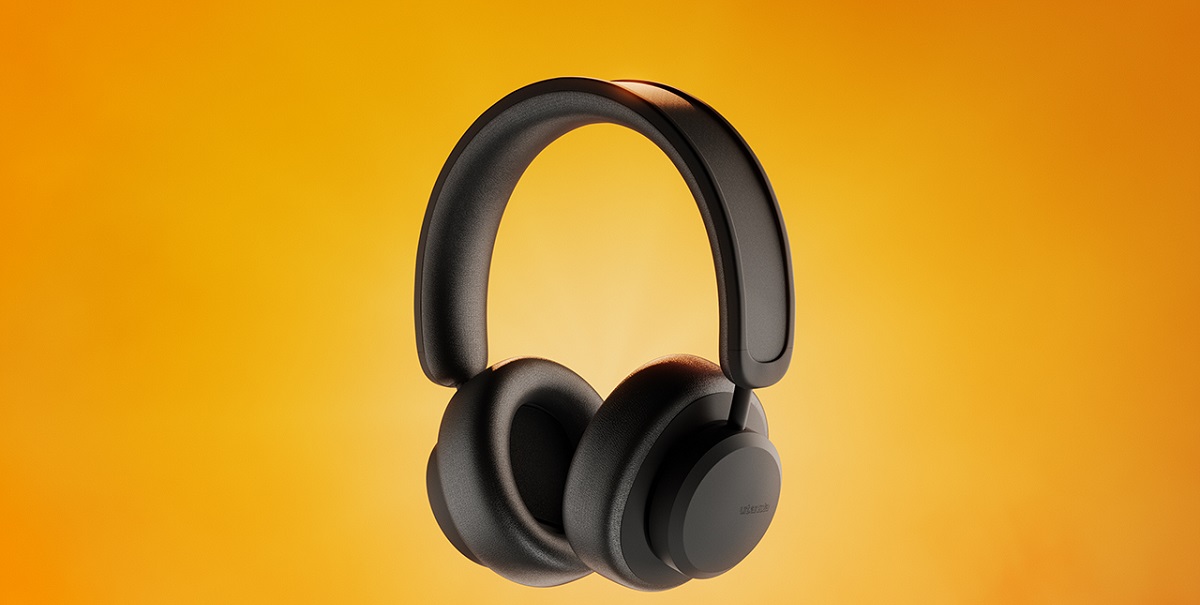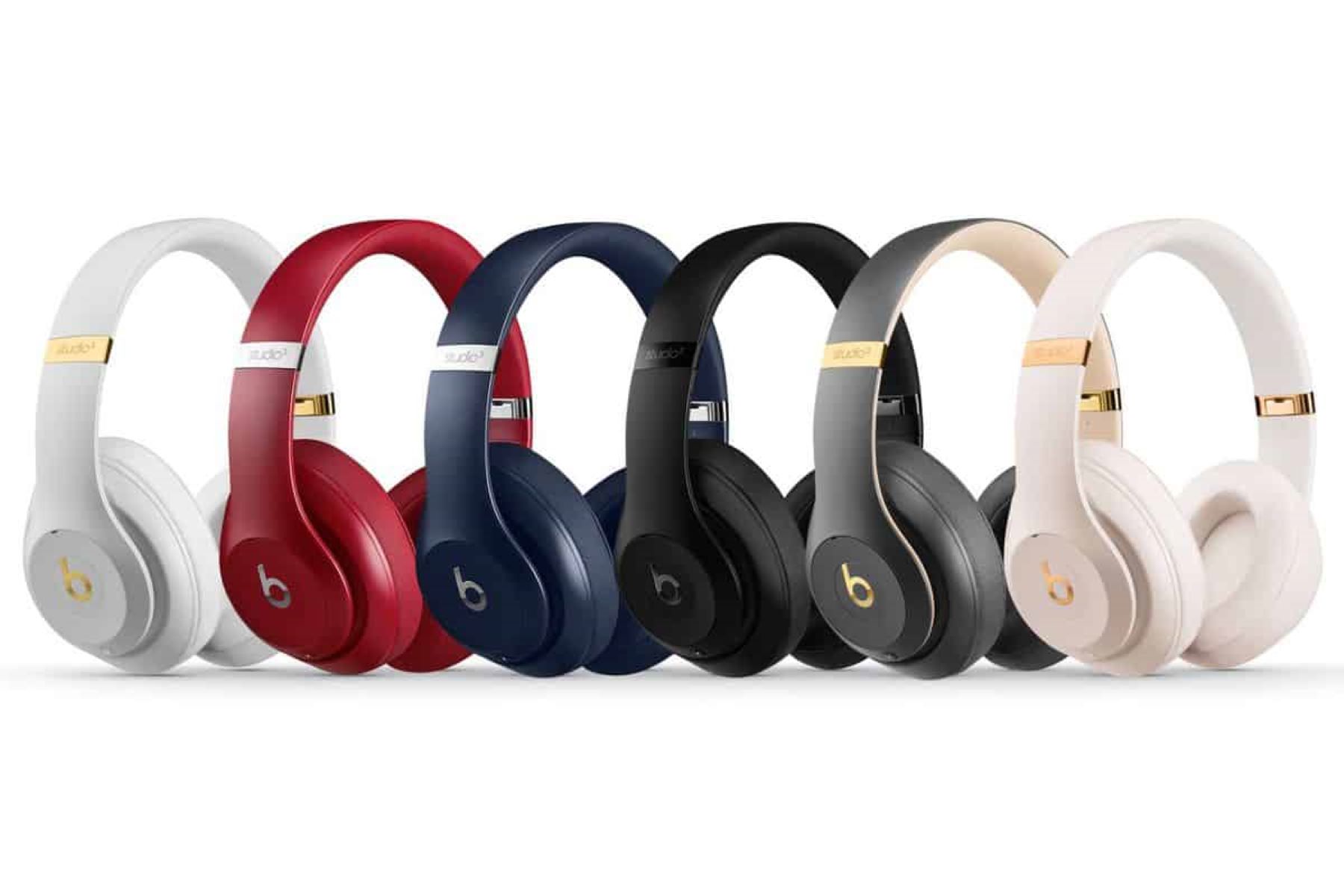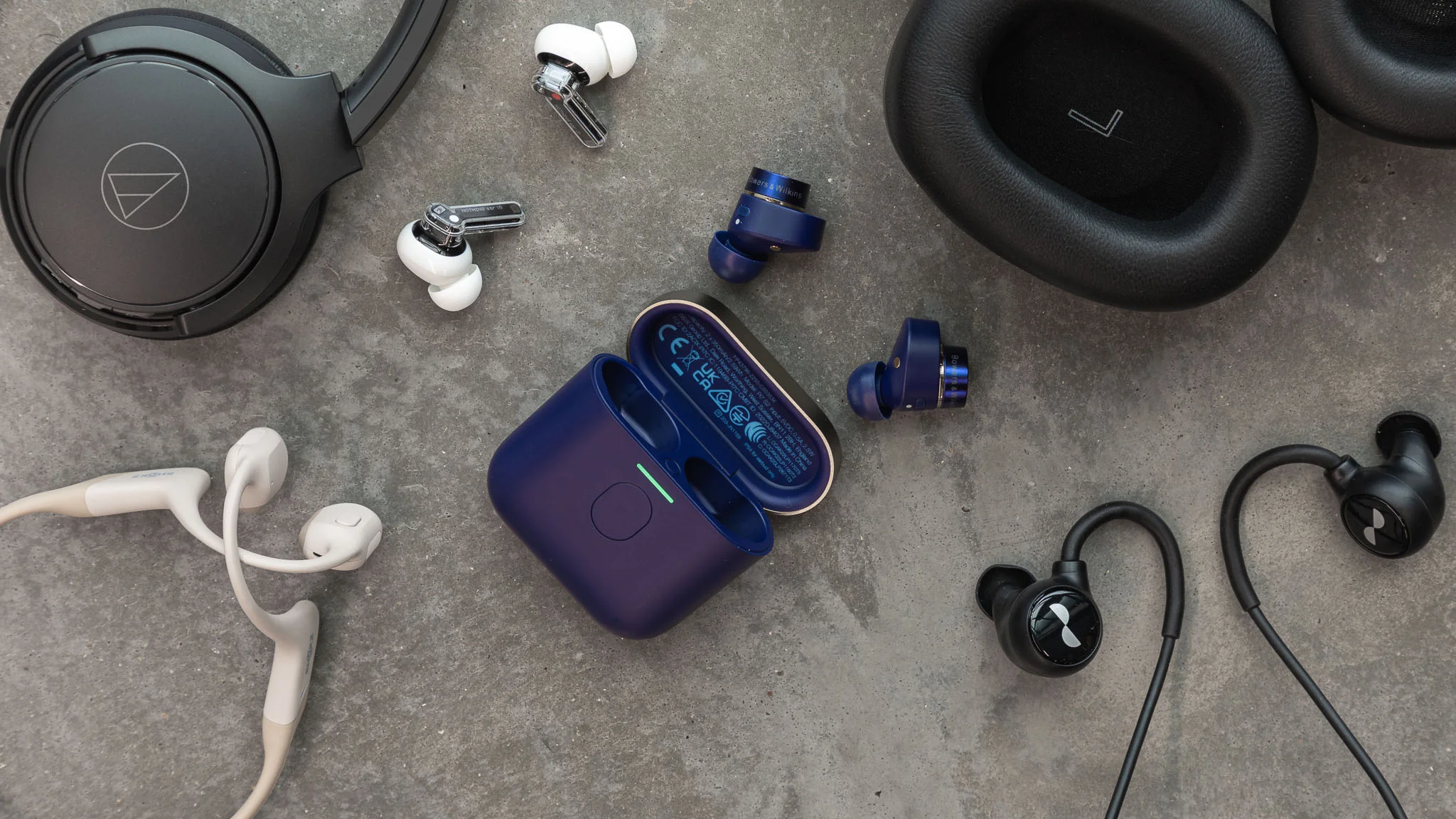Introduction
Welcome to the world of wireless headphones, where the freedom and convenience of listening to your favorite music or taking calls without tangled cords is at your fingertips. Whether you’re a music enthusiast, a fitness enthusiast, or simply someone who appreciates the convenience of wireless technology, wireless headphones have become a popular choice for many.
But have you ever wondered how wireless headphones actually work? In this article, we will unravel the mysteries behind wireless headphones, exploring the technology that enables them to function without physical connections to audio sources.
At the heart of wireless headphones is Bluetooth technology, which revolutionized the way we connect and transmit data between devices. Bluetooth technology allows for seamless wireless communication between devices over short distances, making it an ideal choice for wireless audio transmission.
In the following sections, we will delve into the workings of Bluetooth technology, the process of pairing wireless headphones with devices, the different types of wireless headphones available, the advantages they offer, as well as some limitations to be aware of. We will also provide helpful tips for using wireless headphones to optimize your audio experience. So, let’s dive in and uncover the fascinating world of wireless headphones!
Bluetooth Technology
Bluetooth technology is at the core of wireless headphone functionality. It is a wireless standard that enables the transmission of data over short distances using radio waves. Developed in the 1990s, Bluetooth has since become an integral part of many electronic devices, including smartphones, computers, and of course, wireless headphones.
Bluetooth operates in the 2.4 GHz frequency range and uses a technique called frequency hopping spread spectrum (FHSS). This technique allows devices to switch between different frequencies rapidly, which helps to reduce interference from other wireless devices and ensure a stable connection.
One of the key features of Bluetooth technology is its ability to establish a secure and reliable connection between devices. Bluetooth uses a pairing process to establish a trusted relationship between the audio source (such as a smartphone or laptop) and the wireless headphones. Once paired, the devices can communicate with each other, enabling the transmission of audio signals.
Moreover, Bluetooth technology has evolved over the years to offer improved data transfer rates and energy efficiency. The latest Bluetooth versions, like Bluetooth 5.0 and 5.1, provide faster data transfer speeds and extended range, allowing for better audio quality and connectivity between devices.
Overall, Bluetooth technology has revolutionized the way we connect devices, making it possible for wireless headphones to seamlessly communicate with audio sources without the need for physical connections. Its widespread adoption and continuous development have paved the way for the popularity and effectiveness of wireless headphones in the market.
Wireless Transmission of Audio Signals
Wireless headphones rely on the wireless transmission of audio signals to deliver sound directly to your ears. Instead of using traditional audio cables, they utilize Bluetooth technology to establish a wireless connection with compatible devices.
When you play music or other audio content on your smartphone, for example, the audio signals are converted into a digital format. These digital audio signals are then sent wirelessly to the wireless headphones via Bluetooth.
Once the wireless headphones receive the digital audio signals, they convert them back into analog audio signals using built-in digital-to-analog converters (DACs). These analog signals are then amplified and delivered through the headphone drivers, producing sound that you can hear.
It’s important to note that the quality of the audio transmission can vary depending on several factors, such as the Bluetooth version, codec support, and the distance between the audio source and the wireless headphones. Higher Bluetooth versions and advanced audio codecs, such as aptX or LDAC, can provide better audio quality with less latency.
In addition to Bluetooth, some wireless headphones also support other wireless technologies, such as NFC (Near Field Communication), which allows for quick and easy pairing with compatible devices by simply touching them together.
Overall, the wireless transmission of audio signals allows you to enjoy your favorite music or audio content without the hassle of tangled cords. It provides the freedom to move around while still immersing yourself in high-quality sound.
Bluetooth Pairing Process
The Bluetooth pairing process is a crucial step in connecting your wireless headphones to a compatible device. It establishes a secure and trusted connection between the two devices, allowing them to communicate and transmit audio signals wirelessly. Let’s explore the steps involved in the Bluetooth pairing process.
1. Enable Bluetooth: First, ensure that the Bluetooth feature is enabled on both the audio source device (such as a smartphone or computer) and the wireless headphones. This is usually done through the device’s settings menu or a dedicated Bluetooth button or switch on the headphones.
2. Put Headphones in Pairing Mode: Next, activate the pairing mode on your wireless headphones. This step may vary depending on the model, but it typically involves pressing and holding a specific button or combination of buttons on the headphones until an LED light starts blinking or a voice prompt indicates that the headphones are ready to pair.
3. Discover Devices: On the audio source device, navigate to the Bluetooth settings menu and search for nearby devices. This process differs slightly depending on the operating system. On most smartphones, for example, you would go to the Bluetooth settings and tap on “Scan” or “Pair new device” to search for available headphones.
4. Select and Pair: Once the audio source device discovers the wireless headphones, it will display them in a list of available devices. Select the desired headphones from the list to initiate the pairing process. Some devices may require you to enter a passcode or confirm a pairing request on both the headphones and the audio source device.
5. Successful Pairing: After a successful pairing, the audio source device will indicate that the connection has been established, and the wireless headphones may emit a confirmation sound or display a solid LED light. Once paired, the devices will automatically recognize and connect to each other whenever the Bluetooth feature is enabled.
It’s worth noting that the Bluetooth pairing process may slightly vary depending on the specific model and brand of your wireless headphones. Always refer to the user manual or manufacturer’s instructions for detailed guidance on the pairing process for your specific headphones.
By following these steps, you can quickly and easily connect your wireless headphones to your favorite audio source devices, enabling you to enjoy wire-free and immersive audio experiences.
Types of Wireless Headphones
Wireless headphones come in various types and designs, catering to different preferences and needs. Let’s explore some of the most common types of wireless headphones available in the market today.
1. Over-Ear Headphones: Over-ear headphones, also known as circumaural headphones, have large ear cups that completely enclose the ears. They provide excellent sound quality, comfort, and passive noise isolation. Over-ear wireless headphones are ideal for immersive listening experiences and extended periods of use.
2. On-Ear Headphones: On-ear headphones, or supra-aural headphones, rest on the ears rather than completely enclosing them. They are typically more compact and portable compared to over-ear headphones. On-ear wireless headphones offer a good balance of sound quality and portability, making them suitable for daily use and commuting.
3. In-Ear Headphones: In-ear headphones, also known as earbuds or earphones, fit snugly inside the ear canal. They are lightweight, portable, and provide a more discreet listening experience. In-ear wireless headphones are popular for their convenience and suitability for active lifestyles, such as workouts or commuting.
4. True Wireless Earbuds: True wireless earbuds are a type of in-ear headphones that are completely wire-free. They consist of individual earbuds that connect to the audio source device independently, without any cables or wires between them. True wireless earbuds offer maximum freedom of movement and are highly portable, making them a popular choice for those seeking a minimalist design.
5. Neckband Headphones: Neckband headphones feature a flexible band that rests on the neck, connecting the earbuds or earpieces. They offer a balance between the portability of in-ear headphones and the convenience of having the audio controls and battery pack within reach. Neckband wireless headphones are suitable for those who prefer a secure fit and easy access to controls.
6. Bone Conduction Headphones: Bone conduction headphones work by delivering sound vibrations through the bones of the skull, bypassing the eardrums. They leave the ears open, allowing for awareness of the surrounding sounds. Bone conduction wireless headphones are often favored by athletes and individuals with hearing impairments.
Each type of wireless headphones has its own advantages and considerations. Factors such as sound quality, comfort, portability, battery life, and price should be taken into account when choosing the right type of wireless headphones that best suits your needs and preferences.
Advantages of Wireless Headphones
Wireless headphones offer numerous benefits that make them a popular choice among users. Let’s explore some of the advantages of using wireless headphones:
1. Convenience and Freedom of Movement: One of the primary advantages of wireless headphones is the freedom from tangled cords. You can move around freely without the restriction of a physical connection to your audio source device. Whether you’re working out, commuting, or simply relaxing at home, wireless headphones provide convenience and hassle-free listening experiences.
2. No Interference from Cables: With wireless headphones, you no longer have to worry about cables getting in the way or tangling. This eliminates the annoyance of constantly untangling wires and ensures a clutter-free and organized audio setup.
3. Improved Aesthetics: Wireless headphones offer a sleek and modern look, enhancing your overall style. Without the visible cables, they provide a clean and minimalist appearance when worn, making them a fashionable accessory for audio enthusiasts.
4. Wide Range of Connectivity: Wireless headphones are compatible with a wide range of devices that support Bluetooth connectivity. Whether it’s your smartphone, tablet, laptop, or even smart home devices, wireless headphones can easily pair and connect, offering versatility in audio options.
5. Advanced Features and Controls: Many wireless headphones come equipped with built-in controls for adjusting volume, skipping tracks, and answering calls directly from the headphones. Some models even incorporate voice assistants like Siri or Google Assistant, allowing you to perform tasks hands-free.
6. Improved Battery Life: Wireless headphones often have long battery life, allowing for extended listening sessions before requiring a recharge. With advancements in battery technology, some wireless headphones have a playback time of up to 20 hours or more, ensuring uninterrupted enjoyment of your favorite audio content.
7. Customizable Listening Experience: Certain wireless headphones offer features such as active noise cancellation (ANC) and equalizer settings. ANC helps to block out unwanted background noise, while equalizer settings allow you to adjust the audio to your preferred sound signature, providing a personalized and immersive listening experience.
Whether it’s the convenience of a cord-free experience, the freedom to move around, or the advanced features and controls, wireless headphones provide numerous advantages that enhance your audio enjoyment and make everyday tasks more enjoyable.
Limitations of Wireless Headphones
While wireless headphones offer many advantages, it’s important to be aware of their limitations as well. Let’s explore some of the limitations you may encounter when using wireless headphones:
1. Battery Life: Wireless headphones rely on built-in batteries for power. Depending on the model and usage, battery life can vary significantly. It’s essential to keep track of battery levels and ensure that your headphones are charged to avoid interruptions during extended use.
2. Audio Quality: Although wireless technology has improved over the years, some users may still notice a slight difference in audio quality compared to wired headphones. Compression and latency issues can occasionally result in reduced audio fidelity or a subtle delay between the audio source and the headphones. However, advancements in Bluetooth codecs, such as aptX or LDAC, can mitigate this limitation to some degree.
3. Bluetooth Range: Wireless headphones typically have a limited range of connectivity. While Bluetooth’s range has improved with newer versions, obstacles like walls or interference from other devices can affect the signal strength and stability. It is recommended to keep the audio source device within a reasonable proximity to the headphones for optimal performance.
4. Compatibility: While Bluetooth technology is widely adopted, it’s essential to ensure compatibility between your audio source device and the wireless headphones. Some older devices may have limited or incompatible Bluetooth capabilities, which could prevent them from pairing or experiencing optimal performance with certain wireless headphone models.
5. Price: Wireless headphones tend to be more expensive compared to their wired counterparts due to the added technology and convenience they offer. The quality and features you desire may come with a higher price tag. However, with advancements in technology, there are now wireless headphones available at various price points to suit different budgets.
6. Dependency on Battery: Unlike wired headphones that can always function as long as they’re physically connected, wireless headphones require a charged battery to operate. If the battery runs out, you won’t be able to use your headphones until they are recharged.
It is worth noting that many of these limitations are continually being addressed and improved upon as technology advances. So, while wireless headphones may have their limitations, the convenience and freedom they offer often outweigh these minor drawbacks for many users.
Tips for Using Wireless Headphones
To make the most out of your wireless headphones and ensure a seamless audio experience, here are some helpful tips to keep in mind:
1. Keep your headphones charged: Before using your wireless headphones, ensure that they are adequately charged to avoid interruptions during your listening sessions. Make it a habit to recharge them when not in use to keep the battery at optimal levels.
2. Maintain a clear line of sight: For the best reception and connection quality, try to keep a clear line of sight between your audio source device and your wireless headphones. Obstacles such as walls or other electronic devices may hinder the signal strength, resulting in audio dropouts or reduced range.
3. Choose the right Bluetooth codec: Some wireless headphones support different Bluetooth codecs, such as aptX or LDAC, which can provide enhanced audio quality and reduced latency. If your audio source device also supports these codecs, make sure to select the appropriate codec in the device’s Bluetooth settings for optimized performance.
4. Ensure firmware is up to date: Manufacturers often release firmware updates for wireless headphones. These updates can address any performance issues or add new features. Check for firmware updates regularly and follow the manufacturer’s instructions to keep your wireless headphones up to date.
5. Experiment with different ear tips or cushions: If your wireless headphones allow for interchangeable ear tips or cushions, try different sizes or materials to find the most comfortable and secure fit. A proper fit not only enhances comfort but also improves sound isolation and overall audio quality.
6. Use an audio equalizer: Depending on your personal preferences and the type of music you listen to, adjusting the equalizer settings on your audio source device can help fine-tune the sound to your liking. Experiment with different settings to achieve an audio profile that suits your taste.
7. Consider using a headphone stand or case: When not in use, store your wireless headphones on a dedicated headphone stand or in a carrying case specifically designed for them. This protects them from accidental damage, ensures they remain clean and dust-free, and helps prolong their lifespan.
8. Take care of your headphones: Proper maintenance is crucial for the longevity of wireless headphones. Avoid exposing them to extreme temperatures, excessive moisture, or physical stress. Regularly clean them with a soft cloth or a gentle cleaning solution to remove dirt and oils that may accumulate over time.
By following these tips, you can optimize your wireless headphone experience and enjoy high-quality audio with convenience and comfort.
Conclusion
Wireless headphones have transformed the way we listen to music, watch movies, and make calls. With their convenience, freedom from tangled cords, and advanced features, wireless headphones have become an increasingly popular choice among audio enthusiasts and everyday users alike.
In this article, we have explored the inner workings of wireless headphones, delving into Bluetooth technology, the wireless transmission of audio signals, the Bluetooth pairing process, the different types of wireless headphones available, as well as their advantages and limitations. We have also provided valuable tips for maximizing your wireless headphone experience.
Bluetooth technology revolutionized audio transmission, enabling seamless wireless communication between devices. It offers convenience, compatibility, and customizable features to enhance your listening experience. Meanwhile, the wireless transmission of audio signals allows for a cord-free listening experience and the freedom to move around without restrictions.
When it comes to choosing wireless headphones, there are various options to cater to different preferences and needs. Over-ear, on-ear, in-ear, true wireless earbuds, neckband headphones, and bone conduction headphones offer versatility in design and functionality.
While wireless headphones offer numerous advantages such as convenience, improved aesthetics, and customizable listening experiences, they also have certain limitations. These include battery life, audio quality considerations, Bluetooth range, and compatibility with devices.
To make the most out of your wireless headphones, it is essential to keep them charged, maintain a clear line of sight between devices, choose the right Bluetooth codec, and ensure firmware is up to date. Experimenting with different ear tips or cushions and using an audio equalizer can also enhance your listening experience.
In conclusion, wireless headphones have revolutionized the way we immerse ourselves in audio content by providing a wireless, convenient, and customizable experience. With advancements in technology and continuous innovation, wireless headphones are set to become even more impressive, offering enhanced features and improved performance, further enhancing our audio enjoyment.







